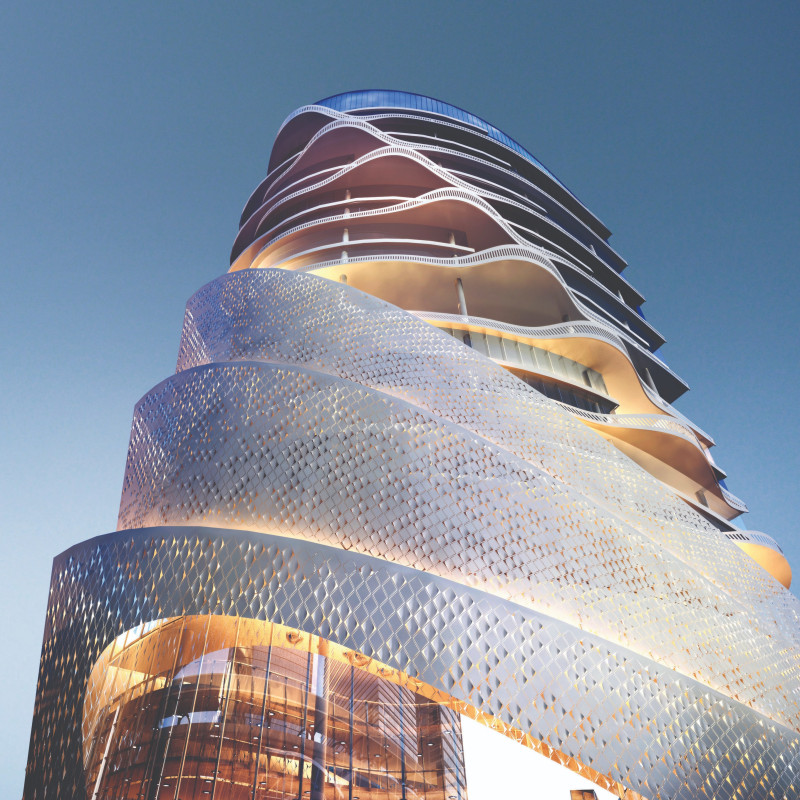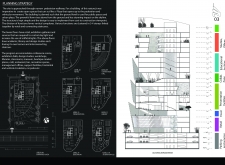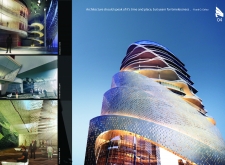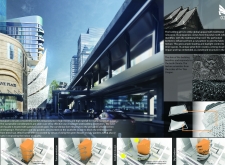5 key facts about this project
The design emphasizes a seamless integration with the landscape, employing materials that reflect local resources and architectural traditions. The structure is characterized by the use of reinforced concrete, sustainably sourced timber, and low-emissivity glass, which collectively enhance not only its aesthetic appeal but also its energy efficiency. The choice of materials has been deliberated to ensure durability and sustainability, thus reducing the environmental footprint of the building throughout its lifecycle.
Functionally, the project is designed to accommodate a variety of activities, from communal gatherings to private functions. This versatility is achieved through an open floor plan, which facilitates movement and encourages interaction among users. Natural light plays a vital role in enhancing the interior spaces, with strategically placed windows and skylights that invite daylight in, while also offering views of the surrounding landscape. This design approach not only improves the quality of the internal environment but also fosters a connection between the inhabitants and the outdoors.
The site organization reflects a careful consideration of circulation pathways, ensuring that both the public and private areas are easily accessible. This thoughtful layout aids in minimizing congestion while promoting a sense of flow throughout the space. The integration of outdoor areas within the overall design underscores a commitment to promoting outdoor engagement, which is crucial in modern architecture.
Unique design approaches are further evident in the building's structural elements, where innovative techniques have been applied to create distinctive architectural features without sacrificing functionality. For instance, cantilevered sections provide covered outdoor spaces, extending the livable area and offering shade in warmer months. This not only contributes to the dynamic form of the building but also emphasizes an architectural dialogue between the interior and exterior realms.
Sustainability is a core principle that runs through this project. By utilizing energy-efficient systems and incorporating natural ventilation, the design minimizes reliance on mechanical cooling and heating, significantly lowering operational costs over time. Additionally, landscape integration has been prioritized, with native plant selections to reduce water usage and support local biodiversity.
The overall aesthetic conveys a sense of simplicity and elegance, featured through clean lines and a restrained palette that allows the natural beauty of the materials to shine through. This humility in design reinforces the project's intention to fit harmoniously into the existing environment, promoting a sense of belonging rather than disruption.
In embracing contemporary architectural ideas while being anchored in the realities of the site, this project remains an exemplary model of how architecture can serve both humanity and the environment. It resonates with visitors, eliciting curiosity and reflection on the relationship between built spaces and their natural surroundings. For those interested in a deeper understanding of the project's design, exploring the architectural plans, sections, and other architectural designs will provide valuable insight into the carefully considered ideas that shape this remarkable project. Engaging with these elements can offer a comprehensive view of the spatial qualities and innovative concepts that define this architectural endeavor.

























